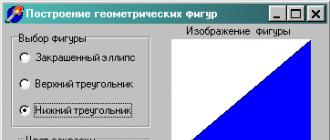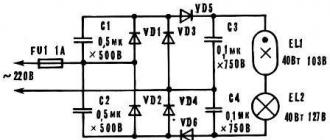Has it ever happened that you were assigned a long-playing task, but you had no time to sit at the computer? Maybe it's time to go or sleep, and someone has to turn off the computer. Automatic shutdown of your computer will help you.
In what cases is it necessary? Well, for example, if you:
- enabled a full scan of the computer for viruses
- launched the video conversion process
- download a large amount of information from the Internet
- install a "heavy" program or game
- copy a large amount of data, for example, for backup
- and many more options for every taste
In some programs there is a checkbox, such as "Automatically shutdown the computer after the completion of the process" or "Auto Shutdown", for example, as in Nero after the end of the disc burning. But if the program does not provide for such an opportunity, then you will have to schedule an auto shutdown on schedule.
This is not difficult. You just need to set the time after which the computer should turn off, or turn on the timer. You need to calculate the time yourself. If the program writes the estimated execution time, then throw 20-30% and get what you need. And if he doesn't write, then estimate the time according to the speed of the task.
There are two simple ways to schedule a scheduled shutdown of your computer:
- Standard Windows XP / 7/8/10 Tools
Personally, I prefer to use special programs, they are simple and straightforward. Now we will analyze the standard method.
Automatic shutdown of the computer using standard Windows tools
To do this, we need a standard "Task Scheduler". So, let's take a closer look at how to configure the "Task Scheduler" to turn off the laptop after a certain time:

That's it, the task has been created. To view it and change the time, you need to go to the task scheduler library and click on our task 2 times with the mouse. Next, you need to go to the "Triggers" tab and click "Change". Everything is explained in detail in the figure.

At the specified time, all programs will be completed and the computer will turn off. Take care of saving all data in open programs in advance.
You might have noticed that we entered the program name "shutdown" and the arguments "–s -f". In principle, you can just type "shutdown –s -f" and do nothing else in the argument field. Then the scheduler will warn you that it has found the arguments itself and will ask permission to use them.
Delayed shutdown of the computer through the command line
You can also turn off the computer without the task scheduler through the command line in the "Run" window. And more specifically, then:
- We call the "Run" window through the "Start -\u003e Run" menu or by hot keys "Win + R"
- We enter “shutdown –s –f - t 1000”, where “1000” is the number of seconds after which the automatic shutdown will occur
- Press "Enter"

Those. we write everything the same, only change "1000" to the required number of seconds (3600 seconds in one hour). After the specified time has elapsed, one more minute will remain, which will be warned about by a special window

If you change your mind about shutting down your computer, just enter the command “shutdown -a” in the “Run” window.
In the video, you can familiarize yourself with programs for conveniently defining a schedule or events for shutting down your computer / laptop:
It seems strange why you need to turn off your laptop / computer on a schedule if you can do it yourself, but there are actually many reasons. Why and how to enable the shutdown timer on Windows 7? For example, some task is being performed on the device, and you urgently need to leave, or other users are working to your PC via a remote connection, and they will finish closer to the night or in the morning, and there is no need for your presence. Everyone will find for themselves a situation in which they need to turn on the shutdown timer for Windows 7. So there are several ways to turn on the shutdown timer for Windows 7, we will describe each one below with detailed instructions.
Enable shutdown timer using CMD
From the articles on our portal, you are well acquainted with CMD - a command line that allows you to manage services and software components with elevated privileges from DOS mode. There is no point in talking about the advantages, since everyone has at least once come across work in cmd. So let's get started.
You can run cmd in several ways:
Start Panel → Run.
Or
Using hotkeys + [R]. 
The next step is to go directly to how to enable and configure the timer:
We enter without quotes and preserving the syntax "shutdown –s –t 300" → "OK". 
Where “-s” means to save all applications with the correct shutdown of the machine, “-t 300” indicating the amount of time in seconds before the OS turns on the shutdown timer - it turns off after 5 minutes. You can specify absolutely any period, but in seconds. In addition, you can specify the option to force shutdown without saving and dialogs from the system "-f".
As a result, the system will turn on the timer and return the message "Windows will be shut down in 5 minutes." - this is an example based on the entered command, moreover, the date and exact time of shutdown will be indicated. 
It is not difficult to enable the timer with the described means, but if the need is no longer necessary, the following parameter will help to disable it:
Enter the following into cmd without quotes and keeping the syntax: "shutdown -a" → "OK" /, where the parameter "-a" is to turn off the timer.

A message appears in the system tray stating that logout is disabled. 
Enable OS shutdown timer: quick way
You can enable the timer in Windows 7 without constantly using cmd, you can use access to commands from the graphical shell of the system, for this:

At the top of the properties window, the image should change → “Apply” → “OK”. 

Time Management Assistant
There is another way to enable scheduled shutdown of the OS, using the built-in tools of Windows 7, which is more suitable for less experienced users. The following is a detailed instruction on how to enable the shutdown timer for a Windows 7 computer using the task scheduler.


- In the list we find the "Task Scheduler".









Many home computer users and office workers are well aware that sometimes it is necessary to use a computer shutdown timer. We will further consider Windows 7 as an example, although in all other modifications of this operating system, the actions are completely similar.
But what is it for? There are many situations. For example, a person watches a movie on the computer in the evening, but realizes that he can fall asleep, and the computer will remain on. An office worker may forget to put the system into sleep mode to avoid access to the terminal while he is away. Thus, it is necessary to decide in advance how to set the shutdown timer (Windows 7). There are several simple ways to carry out such a procedure, which will be discussed below.
How to set the shutdown timer (Windows 7): basic methods
The methodology for using the preferred amount of time before the computer shuts down on its own is fairly straightforward.
As in any other system, in Windows 7, shutdown of the computer on a timer can be done either using the built-in tools of the system itself, or using special third-party programs. Very often you can come across not even full-fledged applications, but so-called widgets that are installed on the "Desktop" in the same way as it is done in mobile devices.
As the most commonly used tools in Windows 7, you can perform a timer shutdown either from the command line or from the Run menu. Both methods are almost identical to each other, the only difference is in the commands entered, although they can be equally applied mutually.
Set the computer shutdown timer (Windows 7) from the command line
To begin with, let's look at the actions with the command line, called through the execution console (Win + R) by entering the cmd combination. Note that in this case, it is not at all necessary to run it with administrator rights, since the used enable or disable commands work at the user level as well.

After calling the command console window, reminiscent of old DOS systems, here you need to write the line shutdown / s / t XXXX (or -s -t), where XXXX is an arbitrary value of the time interval, expressed in seconds (for example, for one hour it is 3600 ). After that, the enter key is pressed, and a message appears on the screen indicating the interval after which the computer will turn off, and the final shutdown time.
Setting shutdown in the Run console
In principle, in order not to use the command console, the computer shutdown timer (Windows 7) can be activated directly from the Run menu, which looks much simpler.

After calling the menu, you need to write in it a line similar to the first example, but using different attributes: shutdown -s -f -t XXXX. Please note that if execution attributes can be written on the command line without spaces, then here they are required without fail.
In both examples, the "-f" attribute can be omitted, but its use will force the system to shutdown if any programs hang.
Using the Task Scheduler

In Windows 7, shutdown of the computer by timer can also be set using the so-called "Task Scheduler", which can be called through the administration section in the computer properties or "Control Panel" or found through the search engine of the main "Start" menu. This program is standard and is present in absolutely all modifications of Windows systems:
- In the editor, use the "Planner" section of the library on the left, and on the right in the action menu - create a simple task.
- Next, in the name field, enter the desired name for the task (for example, "Shutdown").
- Then (which is very important) specify the execution mode (once, daily, etc.).
- After that, the continue button is pressed, in the programs and scripts section, the shutdown command is selected by the browse button or the shutdown command is entered manually, and the above attributes are written in the argument adding field (-s -f or / s / t / XX, where XX is the time interval, again, expressed in seconds).
- Then it remains to press the continue button and "Finish" again.

Quick switch off timer
Now a few words about how to disable the shutdown timer (Windows 7). Based on the described methods of activating it, respectively, you can use two ways to disable:
- The first method, if you were using the command line or execution console, is to invoke them again and issue the command "shutdown / a" for the command line or "shutdown -a" for the Run console without quotes.
- In the same way, the question of how to disable the computer shutdown timer (Windows 7) is solved in the "Task Scheduler" itself. In this case, all actions are reduced to finding the created task in the middle column in the library section and deleting it through the corresponding line in the RMB menu.
The most popular programs and widgets for setting the timer
However, for many users the above methods may seem too complicated, and some do not like digging into Windows settings at all. In this case, a third-party utility may be used, generally referred to as the Computer Shutdown Timer program (Windows 7).
You can find a lot of such utilities, they all have a minimal size and, as a rule, do not require installation. But after launch, widgets appear on the "Desktop", and applications constantly "hang" in the system tray. Actually, therefore, access to their settings is carried out in different ways.

- PowerOff is a small utility with settings for a specific shutdown time, sleep, reboot, etc .;
- TimePC is a program that allows you not only to set a shutdown, but also to enter the computer into hibernation mode and to take the system out of it according to the specified time parameters;
- AutoShutdown - widget (gadget) "Computer shutdown timer" (Windows 7) with capabilities similar to the first two utilities, but always present on the "Desktop";
- Ultimate Shutdown and PC Autos are unpretentious gadgets for controlling PC modes.
Conclusion
As you can see, in Windows 7, shutdown of the computer by timer can be activated in several ways. Which one to prefer? It seems that the most logical solution is to use the system's tools and tools, although third-party widgets can also be a simple solution. That's who you like.
However, in the case of the "Scheduler", the decision to activate the timer looks a little more complicated. In addition, special attention should be paid to the modes of its operation. It is clear after all that when setting a daily trigger, when a person forgets about the settings, the computer will turn off at a strictly defined time, and the user will start puzzling over why this is happening.
On the other hand, disabling in the form of the described commands for the command line and execution console allows you to cancel the shutdown not only by timer, but also by the standard procedure. True, to use this method, a person must have a good reaction and have a prepared tool for quick access to commands at hand.

But, by and large, even in multimedia players, after watching a movie or listening to a music album, you can set an action to turn off the system by setting the appropriate action in the settings.
An overview of the simplest and most popular free programs
to shutdown the computer on schedule.
Here you can also download the software you like and try it out.
The author unobtrusively reminds that Microsoft has an extremely negative attitude towards third-party software (software), since it (this software itself) can lead to destabilization of the entire operating system.
As before, the most proven and reliable way to do this is to use built-in (standard) tools Windows - and.
Scheduled shutdown programs
(download free programs)
Additionally:
Shutdown computer on schedule
built-in (standard) Windows OS
The simplest bat files to shutdown the computer
Developer: site :) :) :)
bat files are Windows executable files with the .bat extension, clicking on which leads to the execution of any action script that is written inside this bat file. In this case, the code of the attached bat-files contains commands to shutdown the computer, as well as commands to cancel already received commands to shutdown the computer.
These bat files are extremely easy to use. You just need to download them and click on them. The computer will turn off, either at the specified time or after a specified period of time.
To change the value of the specified time, you need to right-click on the bat-file and select the "Change" option in the drop-down context menu. After that, the text part of the bat-file will open in notepad, where you can set your time and save the changes.
The advantages of this method of shutting down the computer are the complete absence of viruses and unconditional work in any Windows OS. The disadvantages include unnecessary fiddling with the text of the bat-file. Nevertheless, if such a file is configured once and put into the startup folder, the effect is obtained, very much nothing.
Attention! The bat files offered for download do not have a user interface. A simple click on the bat-file leads to the immediate installation or cancellation of the ONE-TIME command to shutdown the computer.
Download shutdown-timer.bat - (Downloads: 3786)
To change the timer time, you need to change in the downloaded file "shutdown-timer.bat", in the shutdown / s / f / t line 1000, the number 1000 to its value, where 1000 is the number of seconds until the computer turns off from the moment of clicking on the file "shutdown -timer.bat "
Download shutdown-exact time.bat - (downloads: 1266)
To change the exact time, you need to change in the downloaded file "shutdown-exact time.bat", in the line at 21:51 shutdown / r / f, the figure 21:51 to its value, where 21:51 is the exact time when the computer was turned off after clicking by the file "shutdown-timer.bat"
Download shutdown-cancel command.bat - (Downloads: 816)
You do not need to change anything in the shutdown-cancel command.bat file. Clicking on this downloaded file will cancel all previously assigned shutdown commands.
OFF Timer - the simplest computer shutdown
Developer: Egor Ivakhnenko, 2010
A miniature simple Russian-language program for one-time shutdown of the computer at a specified time. In principle, OFF Timer is an analogue and continuation of the theme "The simplest bat-files for shutting down the computer" with the only difference that the program has a user interface.
No installation required, Portable, works from any folder. The last property is very important for programs of this type - I didn't like it, I threw it all away. The program has a minimum of settings, which are very easy to understand, even from a screenshot. Works great on any Windows, because it uses the same means to shutdown. It can successfully replace the standard "Shutdown" button of Windows OS.

PowerOff is the most powerful Windows shutdown timer
Off.site of the PowerOff program
In conclusion, the most powerful and multifunctional tool for shutting down a Windows computer is the timer PowerOf... The program is simply re-stuffed with all sorts of "bells and whistles", which makes one think about the adequacy of its authors and its users. Functional PowerOf is incredibly extensive and allows you to accomplish feats such as scheduling your computer to shutdown every day at different times, or shutting down your computer after listening to a specified number of music tracks. The only thing missing is the function of scheduled shutdown of the computer after the specified number of drunk cans of beer :) :) :).

It's no secret that nowadays the computer makes life much easier. It's convenient to use and really helps save a lot of time searching for information. It is also often used for entertainment. Many people watch TV shows, movies, or play games. It often happens like this: you watch a movie on your computer, and after the final credits you don't want to get up and turn it off at all. By knowing the special commands, these operations can be avoided. The computer can be set to auto-complete. through the command line will make watching movies more comfortable. Here we will talk about the order of actions, as well as a shortcut that works as a shutdown button.
Shutting down the computer through the command line
Any user can do this. The shutdown command will help you with this. First, you need to enter the control line itself. To do this, click "Start", hover over "All Programs" and try to find "Accessories" there. When you click on it, the Windows menu will open in front of you, which can make your work easier. One of these programs - Open it, a black window will appear in front of you. This is what we are looking for. With it, you can control your computer. You can also turn off your PC or put on a timer. In order to set it for a certain time, it is enough to enter the command "Turn off the computer" through the command line. You need to write shutdown in English letters. From English this translates as "close". However, entering this command alone is not enough. You must additionally put "-" and the English letter "s". The whole code looks like this: "shutdown-s". After you press Enter, the computer shutdown button will work.
How to put the computer on auto shutdown via the command line?
Now we will tell you how to make your PC more convenient. It would be nice to be on your own after a while. This can also be done via the command line. You need to go to it through "Start" / "All Programs" / "Accessories" / "Command Line". Next, in the open black window, you enter the same command as for shutdown - "shutdown-s". But it is necessary to add an entry to it that the computer should not be turned off now, but after a while, that is, add "-t" after a space. This will make it clear to the computer that it should turn off after a certain time. Next, you should specify the time in seconds after which your computer should shutdown. Let's say, by writing "shutdown -s -t 10", wait for the shutdown after ten seconds. If you write shutdown -s -t 6000, the computer will shutdown after 100 minutes. We would like to remind you that 10 minutes before the completion of the work, a window with the remaining time will appear on the screen. If you want to cancel the shutdown, you can do it. You can see how to do this in the article below.

How do I cancel the shutdown of my computer?
If you needed to put the PC on a timer, but then you changed your mind and do not need this action, you need to enter the code "shutdown -a" in the command line. After that, the previous operation will be canceled, and you can continue to work further.

Computer shutdown shortcut
Agree, it's convenient if the computer can be turned off from the icon on the desktop. You do not need to go into "start-off" every time. Just clicking on the icon will trigger the shutdown. You can do it yourself and it won't take much of your time.

How do I create a shutdown shortcut?
If you decide to create a shortcut to shutdown your computer, there are some steps you need to take. You will succeed if you follow the instructions. To do this, from scratch on the desktop, right-click to bring it up, select "Create". Next click on the "shortcut". A simple icon will be created on your desktop. After its formation, a window will pop up with the question "For which element do you need to create a shortcut?" It will contain a line for input with the name "specify the location of the object". In it, you need to write text similar to control words for shutting down the computer through the command line. But it will be slightly different. The command will look like this: Shutdown.exe -s -t 00. After entering the command, press Enter. Next, you have to name the folder. You can call it "shutting down the computer" or in another way - as convenient or whatever you like. Click the Finish button and the folder is created. You can also change the icon of this shortcut. Click on it with the right mouse button, then select "Properties". Go to the "Shortcut" section and below you will see "Change icon". Click, choose the one you like, click "Save" and "Finish". Place this symbol separately from the others so that you do not accidentally turn off the PC later. We hope this article helped you understand what the computer shutdown command is and how to create a shortcut for this.






